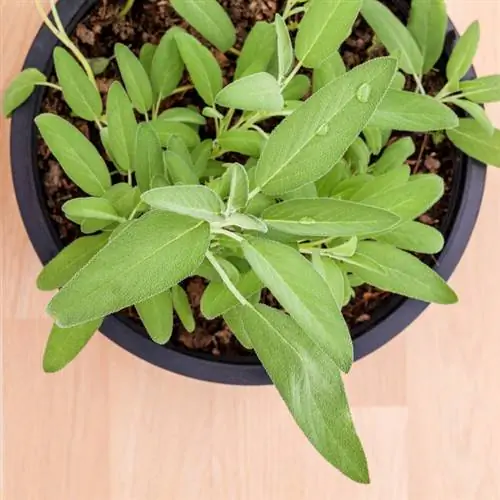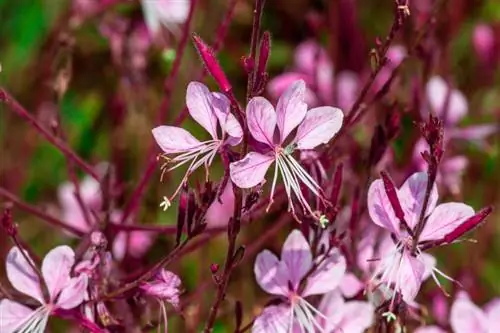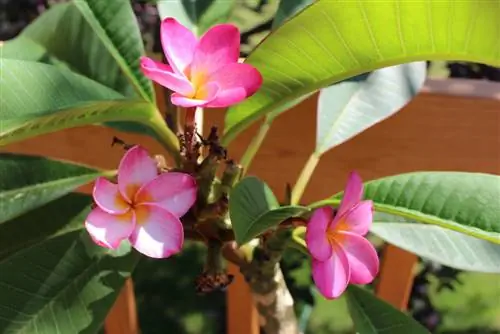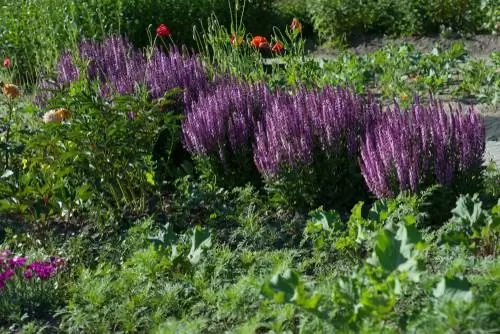- Author admin [email protected].
- Public 2023-12-16 16:46.
- Last modified 2025-06-01 06:02.
If sage in the pot is given a sunny, warm location on the balcony, the course is well set for magnificent growth. We have put together for you what is important in care.
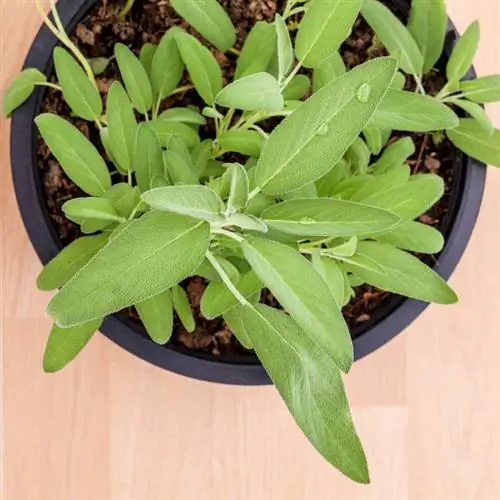
How do you properly care for sage in a pot?
Sage in a pot requires a sunny, warm location and regular watering without waterlogging. Young plants need more water and nutrients, while older plants are more frugal. Regular cuts, good winter protection and a suitable pot are important for optimal growth.
Watering and fertilizing in a balanced way - this is how it works
Native to the sun-drenched, dry regions of the Mediterranean, sage in a pot has very modest demands on the water and nutrient balance. The older the herb plant, the more frugal it is. How to do it right:
- Water young sage regularly without causing waterlogging
- Water older specimens moderately when the substrate is well dried
- Provide with organic liquid fertilizer (€13.00 on Amazon) every 2 weeks from March to August
In July and August, the targeted application of potassium-concentrated fertilizer should be made in order to strengthen the winter hardiness of the evergreen subshrub.
Cutting sage with a sense of proportion - how to do it right
When it comes to potted sage, cutting and harvesting go hand in hand. The top priority is not to cut into the wood. All other aspects fall into place behind it. The following tips show the way:
- When budding begins, trim the plant regularly
- Expand each harvest by cutting additional shoot tips
- Don't cut sage from August onwards
Ideally, you should carry out the central maintenance cut in February or March, shortly before sage sprouts again. All branches are cut back to 15 centimeters. On older plants, the two oldest shoots should also be thinned out close to the ground.
This is how sage in a pot gets through the winter well
Professional care creates plants that are prepared for successful overwintering in pots. The following precautions serve as effective winter protection:
- Cover the substrate with straw, leaves or sawdust
- Wrap the pot thickly in bubble wrap
- Place on a block of wood in front of the south wall of the house
Ideally, a bright winter quarter with temperatures of 5-10 degrees Celsius is available for sage. Winter care is limited to a little watering now and then. Tropical sage species can easily overwinter on the sunny, warm windowsill.
Tips & Tricks
It is preferable to cultivate sage in an unglazed clay pot. This not only creates a decorative and authentic appearance, but also ensures good ventilation of the substrate thanks to the open-pored material.

